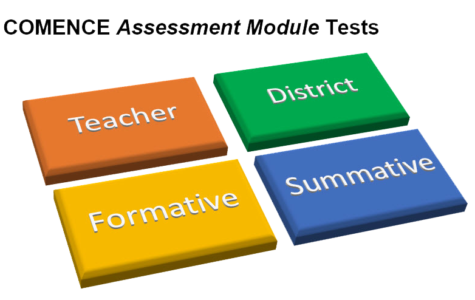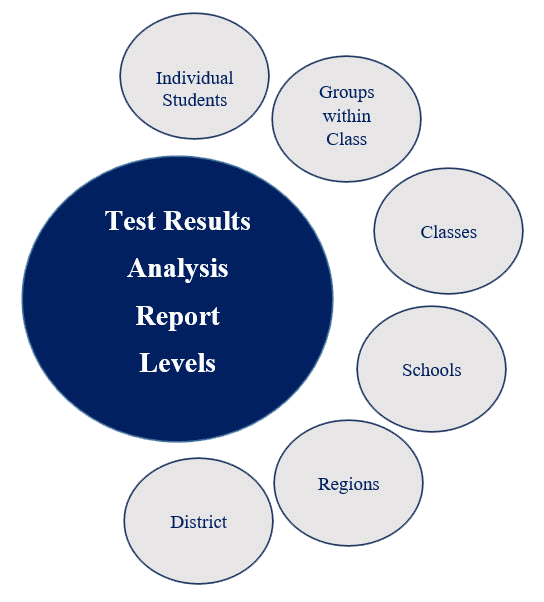Assessment involves much more than testing. Therefore, in COMENCE, assessment has two major components: testing and progress reporting. Teachers remain the key to essential assessment to enhance instruction. Assessment techniques range from samples of students work to the invaluable classroom observation by teachers. Recently, many of these approaches have been sidelined and replaced by standardized tests, some of which do not really contribute to academic achievement of students. Testing is important, but it has its place. COMENCE puts tests in perspective for practical use by schools, districts, and especially teachers.
COMENCE TEST DESIGN FOR PURPOSEFUL TESTING


While the Progress Report Module enables teachers to base student evaluation on a range of methods of assessment, the COMENCE Assessment Module focuses solely on tests. This component provides educators means to develop tests by composing their own items, importing items, as well as sharing. The tools also feature convenient aligning of test items with any selected academic standards. The Assessment Module helps serve multiple testing purposes, incuding quizzes, unit tests, benchmarks, and other exams that may be created and administered at the classroom, school, and district levels.
Tests can be diagnostic, formative or summative with items that address various cognitive levels of students. With the Assessment Module, multiple choice tests may include text and images. Using this tool, educators not only design the test, but can control administration from a number of students to an individual.
Tests results reports are available to teachers and other educators in a number of statistical analysis and formats from the individual student to a class to an entire district. Tests developed in COMENCE can be instantly checked for certain psychometric properties. In addition, students and parents are provided a convenient portal to view results and test history as designated by teachers.

COMENCE ASSESSMENT MODULE
-
- Allows teachers to evaluate instruction and learning at designated benchmarks as well as intervals they establish.
-
- Assists educators in decision making for individual students, classes, schools, or an entire district.
-
- Enables educators to produce diagnostic tests to analyze students’ entering behaviors and preparation for learning.
-
- Enables educators to produce formative tests to capture incremental aspects of student progress which is essential to improving instruction and learning at the individual students and class levels.
-
- Assists educators in determining students’ level of proficiency related to course content.
-
- Empowers teachers to develop, administer, and share tests that target specified instruction content based on standards, learning objectives, and required knowledge and skill indicators.
-
- Enables educators to examine students’ scores individually as well as at the class, school, and district levels.
-
- Enables districts to develop formative and summative tests, analyze them, and control administration and security.
-
- Maintains historical record of all students’ tests.
-
- Enables teachers and students and parents to observe: Student Performance on Items; Student Performance on Objectives; Student Performance Related to Standards.
